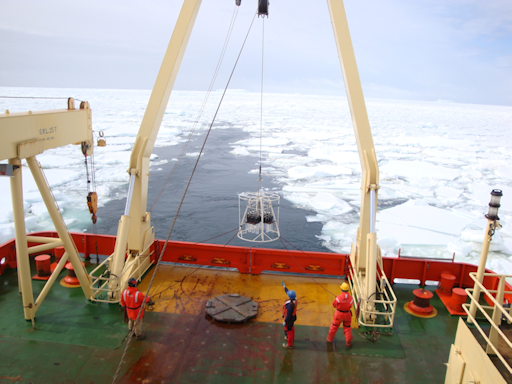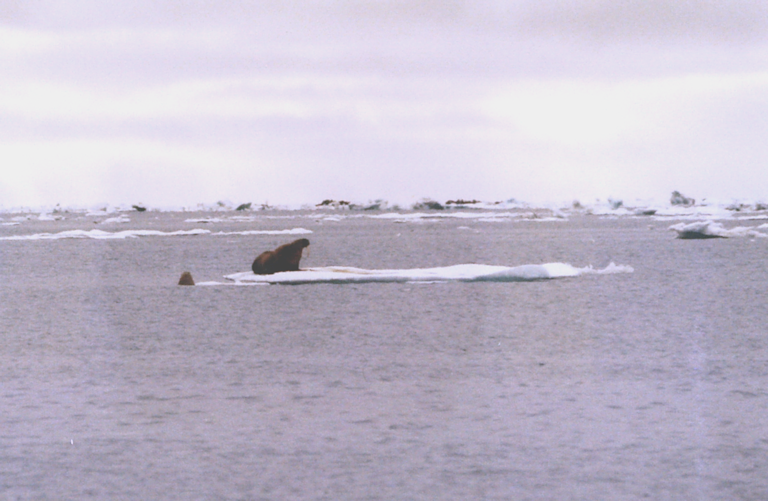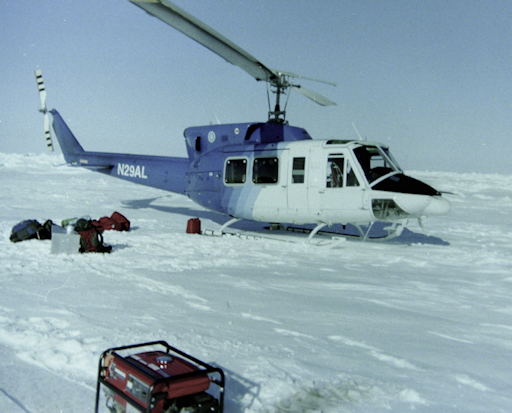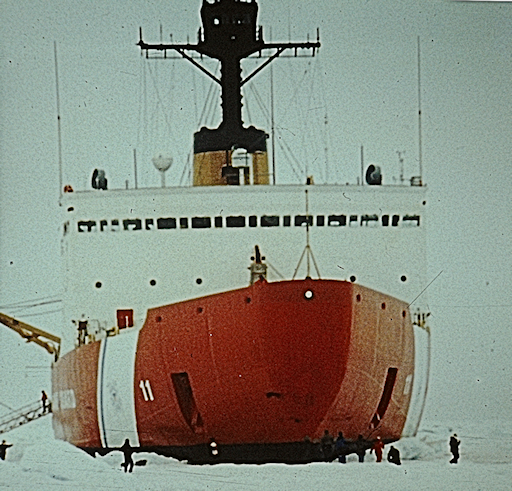Publications about polar oceans
It is the polar oceans that have and will continue to experience the most dramatic climate change alterations. As such, much federal effort has been expended in understanding these remote and inhospitable sections of the planet. For Maine, the seawater outflow from the Arctic Ocean quickly moves south along the Nova Scotia and Maine coasts, so changes up north strongly influences conditions in the Gulf of Maine. Below are some of our results from past polar studies
sediment iron on the antarctic shelf
In the surface waters off Antarctica, plant productivity appears to be limited not by nitrogen but rather by the available concentrations of iron in the sea water. One possible iron source that had not been evaluated was continental shelf sediments. In temperate shelves, the sediments have significant concentrations of iron. Off the Antarctic Peninsula, we investigated the sediment community metabolism and the distributions and mineralogy of sedimentary iron. Estimates of iron fluxes out of the sediments, although small, could help supply iron to the surface waters.

The research vessel Nathaniel B. Palmer is lowering an instrument package into the deep sea off Antarctica. (Photo by D. Burdige.)

Walrus sunning itself on the ice flow off of Alaska. (Photo by J. Christensen.)
Inundation of the northern alaskan shelf
In surveying the U.S. waters north and west of Alaska, we discovered strong upwelling of deeper waters at the shelf break north of Alaska and inundation of a large area of the shelf. The flow of this inundation approximated the quantity of Pacific water flowing north through the Bering Strait, so the inundation represented a significant event. Plant growth was stimulated at the boundary between surface waters and the inundation waters.
springtime north of alaska
An early spring survey via helicopter on the shelf-break north of Alaska demonstrated strong and complex currents under the heavy sea-ice cover. These currents support upwelling of deeper nutrient-rich water, moving this water close to the surface. This upwelling likely enriched plant growth in the subsequent weeks as sunlight permeated through the sea-ice.
-A–Springtime waters and nutrients in the Beaufort Sea.
-B–Nitrate profiles from the In Situ Ultraviolet Spectrometer.

Helicopter just landed on the sea ice, north of Alaska in early spring. (Photo by J. Christensen.)

The USCG Polar Sea ties up to a large ice-flow in the central Arctic Ocean for a picnic. All can get out and walk around the ship. (Photo by J. Christensen.)
rich sediments on the northern alaskan shelf edge
Sediments off northern Alaska were sampled in summer and measured for their rates of organic matter consumption. High sediment community respiration rates, found on the upper continental slope just north of the shelf edge, accounted for an unusually large part of the plant production in the overlying surface waters. These high rates may indicate significantly enriched plant growth north of the shelf break because of frequent upwelling on nutrient-rich water there.
